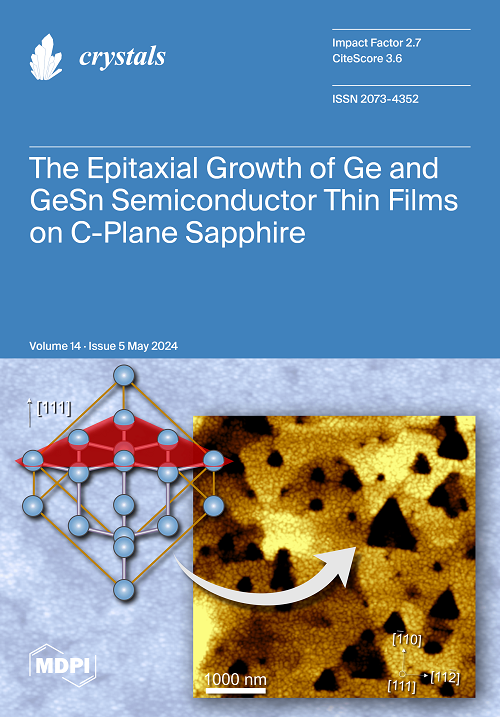All-Optical Switching Using Cavity Modes in Photonic Crystals Embedded with Hyperbolic Metamaterials
IF 2.4
4区 材料科学
Q2 CRYSTALLOGRAPHY
引用次数: 0
Abstract
Hyperbolic metamaterials (HMMs) are highly anisotropic materials with the unique property of generating electromagnetic modes. Understanding how these materials can be applied to control the propagation of light waves remains a major focus in photonics. In this study, we inserted a finite-size HMM rod into the point defect of two-dimensional photonic crystals (PhCs) and investigated the unique cavity modes of this hybrid system. The HMM enhances the efficiency of the cavity system in controlling light transmission. Numerical results demonstrate that the cavity modes based on HMMs can be categorized into various types, showing high Q-factors and promising potential for resonant modulation. Furthermore, the switching performance of the cavity with an HMM rod was examined, revealing that the finite-size HMM modes are highly frequency-sensitive and suitable for nonlinear controlled all-optical switching. These switches, characterized by low power consumption and high extinction ratios, are highly suitable for integration into photonic systems. Our investigation on the new type of HMM cavity illustrates that anisotropic materials can be effectively applied in cavity systems to generate highly efficient modes for filtering and switching.利用嵌入双曲超材料的光子晶体中的腔模来实现全光开关
双曲超材料(HMM)是一种高度各向异性的材料,具有产生电磁模式的独特特性。了解如何应用这些材料来控制光波的传播仍然是光子学的一个重点。在这项研究中,我们在二维光子晶体(PhCs)的点缺陷中插入了一个有限尺寸的 HMM 棒,并研究了这种混合系统的独特空腔模式。HMM 提高了空腔系统控制光传输的效率。数值结果表明,基于 HMM 的空腔模式可分为多种类型,显示出较高的 Q 因子和用于谐振调制的潜力。此外,还研究了带有 HMM 杆的空腔的开关性能,发现有限尺寸的 HMM 模式对频率高度敏感,适合非线性控制的全光开关。这些开关具有低功耗和高消光比的特点,非常适合集成到光子系统中。我们对新型 HMM 腔体的研究表明,各向异性材料可有效地应用于腔体系统,产生用于滤波和开关的高效模式。
本文章由计算机程序翻译,如有差异,请以英文原文为准。
求助全文
约1分钟内获得全文
求助全文
来源期刊

Crystals
CRYSTALLOGRAPHYMATERIALS SCIENCE, MULTIDIS-MATERIALS SCIENCE, MULTIDISCIPLINARY
CiteScore
4.20
自引率
11.10%
发文量
1527
审稿时长
16.12 days
期刊介绍:
Crystals (ISSN 2073-4352) is an open access journal that covers all aspects of crystalline material research. Crystals can act as a reference, and as a publication resource, to the community. It publishes reviews, regular research articles, and short communications. Our aim is to encourage scientists to publish their experimental and theoretical results in as much detail as possible. Therefore, there is no restriction on article length. Full experimental details must be provided to enable the results to be reproduced. Crystals provides a forum for the advancement of our understanding of the nucleation, growth, processing, and characterization of crystalline materials. Their mechanical, chemical, electronic, magnetic, and optical properties, and their diverse applications, are all considered to be of importance.
 求助内容:
求助内容: 应助结果提醒方式:
应助结果提醒方式:


